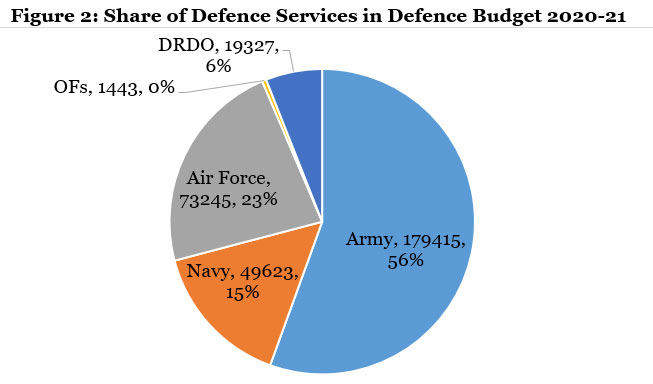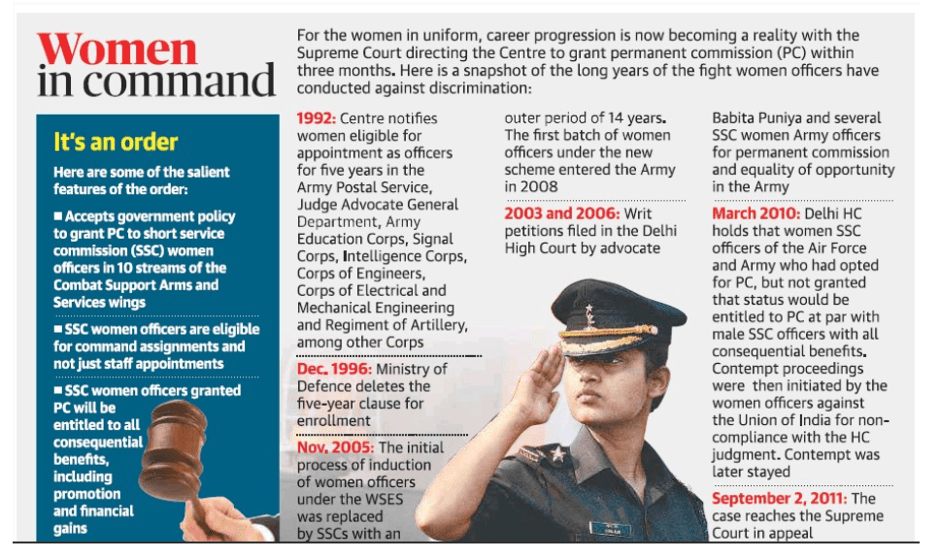Contents:
- Zonal Cultural Centres (ZCCs)
- World Heritage List for the year 2020
- Defence Expenditure
- Defence Corridors at Tamil Nadu
- Women in Defence Forces
ZONAL CULTURAL CENTRES(ZCCs)
Focus: GS-I Art and Culture, Prelims
Why in news?
To preserve & promote various forms of folk art and culture of the tribals throughout the country including West Bengal, the Government of India has set up seven Zonal Cultural Centres (ZCCs) with headquarters at:
- Patiala
- Nagpur
- Udaipur
- Prayagraj
- Kolkata
- Dimapur and
- Thanjavur
Details:
Sahitya Akademi, an autonomous organization under Ministry of Culture, encourages the preservation and promotion of languages, especially the unrecognized and tribal languages.
No funds are provided directly to States/UTs. However, annual grant-in-aid is provided to all the ZCCs for organizing various cultural activities and programmes in their member States including West Bengal.
Schemes being implemented by Zonal Cultural Centres (ZCCs)
- Award to Young Talented Artists: The Scheme “Young Talented Artists” is carried out to encourage and recognize the young talents especially in the field of rare art forms.
- Guru Shishya Parampara: This scheme envisages transmitting our valued traditions to the coming generations. Disciples are trained under veterans in art forms which are rare and vanishing. Rare and vanishing art forms of the region are identified and eminent exponents are selected to carry out the training programmes in ‘Gurukula’ tradition.
- Theatre Rejuvenation: To promote theatre activities including stage shows and Production oriented workshops, etc.
- Research & Documentation: To preserve promote and propagate vanishing visual and performing art forms including folk, tribal and classical in the field of music, dance, theatre, literature, fine arts etc. in print/ audio – visual media.
- Shilpgram: To promote folk and tribal art and crafts of the zone
- Octave: To promote and propagate the rich cultural heritage of North East region comprising of eight States namely Arunachal Pradesh, Assam, Meghalaya, Mizoram, Sikkim, Nagaland, Manipur and Tripura to the rest of India.
- National Cultural Exchange Programme (NCEP): It can be termed as the lifeline of the Zonal Cultural Centers. Under this scheme, various festivals of performing arts, exhibitions, yatras etc are organized in member States.
NCEP
- Under the National Cultural Exchange Programme (NCEP) funded by the Ministry of Culture, Govt. of India artistes from the Zone showcase their talent in other parts of the country.
- The main aim of this scheme is exchange of artistes, musicians, performers and sculptors etc. between different regions with in the country for the promotion of rich cultural heritage of India. This scheme is benefiting a large number of folk artistes, musicians, artisans etc.
WORLD HERITAGE LIST FOR THE YEAR 2020
Focus: GS-I Art and Culture, Prelims
Why in news?
- Government of India has submitted two nomination dossiers namely ‘Dholavira: A Harappan City’ and ‘Monuments and Forts of Deccan Sultanate’ for inclusion in the World Heritage List for the year 2020.
- Govt. of Madhya Pradesh has submitted the proposal of ‘Group of Monuments at Mandu’ in the year 2019.
World Heritage Sites
- A World Heritage Site is a landmark or area, selected by the United Nations Educational, Scientific and Cultural Organization (UNESCO) for having cultural, historical, scientific or other form of significance, which is legally protected by international treaties.
- The sites are judged to be important for the collective and preservative interests of humanity.
- To be selected, a World Heritage Site must be an already-classified landmark, unique in some respect as a geographically and historically identifiable place having special cultural or physical significance (such as an ancient ruin or historical structure, building, city, complex, desert, forest, island, lake, monument, mountain, or wilderness area).
- It may signify a remarkable accomplishment of humanity, and serve as evidence of our intellectual history on the planet.
- The sites are intended for practical conservation for posterity, which otherwise would be subject to risk from human or animal trespassing, unmonitored/uncontrolled/unrestricted access, or threat from local administrative negligence. Sites are demarcated by UNESCO as protected zones.
- The list is maintained by the international World Heritage Program administered by the UNESCO World Heritage Committee, composed of 21 “states parties” that are elected by their General Assembly.
List of World heritage Sites in India:
- Agra Fort
- Ajanta Caves
- Ellora Caves
- Taj Mahal
- Group of Monuments at Mahabalipuram
- Sun Temple, Konârak
- Kaziranga National Park
- Keoladeo National Park
- Manas Wildlife Sanctuary
- Churches and Convents of Goa
- Fatehpur Sikri
- Group of Monuments at Hampi
- Khajuraho Group of Monuments
- Elephanta Caves
- Great Living Chola Temples 13
- Group of Monuments at Pattadakal
- Sundarbans National Park
- Nanda Devi and Valley of Flowers National Parks
- Buddhist Monuments at Sanchi
- Humayun’s Tomb, Delhi
- Qutb Minar and its Monuments, Delhi
- Mountain Railways of India
- Mahabodhi Temple Complex at Bodh Gaya
- Rock Shelters of Bhimbetka
- Champaner-Pavagadh Archaeological Park
- Chhatrapati Shivaji Terminus (formerly Victoria Terminus)
- Red Fort Complex
- The Jantar Mantar, Jaipur
- Western Ghats
- Hill Forts of Rajasthan
- Great Himalayan National Park Conservation Area
- Rani-ki-Vav (the Queen’s Stepwell) at Patan, Gujarat
- Archaeological Site of Nalanda Mahavihara at Nalanda, Bihar
- Khangchendzonga National Park
- The Architectural Work of Le Corbusier, an Outstanding Contribution to the Modern Movement *
- Historic City of Ahmadabad
- Victorian Gothic and Art Deco Ensembles of Mumbai
- Jaipur City, Rajasthan
DEFENCE EXPENDITURE
Focus: GS-III Indian Economy, Internal Security
Why in news?
It may be seen from data of economic survey that Defence Budget as a percentage of GDP may appear to be decreasing due to increasing trend in the growth of GDP. However, it is increasing in absolute terms, implying higher spending.
Details
- The Indian Army, given its overwhelming size, continues to be the biggest stakeholder in the defence budget.
- Among the three forces, army has, however, the lowest capital share.
- Furthermore, its capital share has seen a decline, from a high of 26 per cent in 2007-08 to 18 per cent in 2020-21, largely due to increase in P&A, which accounts for 70 per cent of its total revenue expenditure and 57 per cent of the total budget in 2020-21.
- The army’s increase in the revenue share is a cause of concern considering its attempt to shift to the higher side of the technology-driven warfare which requires a much greater spend on capital assets.

- Note: Army includes Military Farms, Ex-Servicemen Contributory Heath Scheme (ECHS), Directorate General Quality Assurance (DGQA), Rashtriya Rifles, and National Cadet Corps (NCC). Navy includes Joint Staff.
DEFENCE CORRIDORS AT TAMIL NADU
Focus: GS-III Internal Security
Why in news?
- In pursuance to the Union Budget announcement (2018-19), it has been decided to set up two Defence Industrial Corridors in the Country, one in Uttar Pradesh and another in Tamil Nadu.
- Subsequently, five nodes for Tamil Nadu Defence Industrial Corridor, viz. Chennai, Coimbatore, Hosur, Salem and Tiruchirapalli have been identified.
Advantages:
- Setting up of Tamil Nadu Defence Industrial Corridor would catalyse indigenous production of defence and aerospace related items, thereby reducing our reliance on imports and promoting export of these items to other countries.
- This will lead to generation of direct & indirect employment opportunities and growth of private domestic manufacturers including Micro, Small and Medium Enterprises (MSMEs) and start-ups.
WOMEN IN DEFENCE FORCES
Focus: GS-III Internal Security, GS-II Social Justice
Why in news?
Year wise induction details of women officers in the three armed forces during the past three years and current year, given in a written reply is as follows:
| 2017 | 2018 | 2019 | 2020 | |
| Indian Army | 949 | 819 | 364 | 01 |
| Indian Air Force | 59 | 59 | 51 | 00 |
| Indian Navy | 57 | 38 | 54 | 18 (in progress) |
% of women officers is more in Indian air force than army and navy.
Details
- Indian Army is committed to comply to the judgement of Hon’ble Superme Court passed on 17th February, 2020 granting permanent commission to the women officers as per their qualification, professional experience, specialization, if any and organization requirement.
- The commanding posts in the Indian Air Force (IAF) are decided purely on merit basis. There is no embargo for detailment of women officers for Commanding Officers’ post in the IAF.
- Male and female officers inducted into the Navy in various Branches/Cadres/Specialisations under similar schemes are treated at par and without discrimination for posting/billeting.
Background

- The Supreme Court had ruled on February 2020, that the Short Service Commission (SSC) women officers are eligible for the permanent commission and command posts in the Army irrespective of their years of service.
- The verdict came on a nearly 10-year-old appeal filed by the government against the 2010 decision of the Delhi High Court to grant SSC women officers permanent commission.
- The court ordered the government to implement its judgment in three months.
- The court dismissed the government’s stand that only women officers with less than 14 years of service ought to be considered for permanent commission, and those with over 20 years of service should be pensioned immediately.
- The court has done away with all discrimination on the basis of years of service for grant of PC in 10 streams of combat support arms and services, bringing them on a par with male officers.




